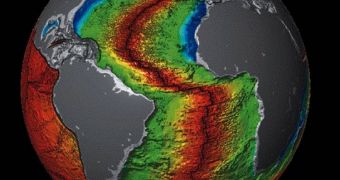A researcher sponsored by NASA believes that the presence of the mantle underneath Earth's crust is not enough to explain the motions tectonic plates around the world are displaying. He proposes that some other mechanisms are at work here as well.
The mantle is located between 22 and 75 miles (35.4 to 120.7 kilometers) below the planetary crust, and is primarily made up of partially molten rocks. This viscous mixture is stirred by convection forces produced by the intense heat of the planet's core.
Through this mechanism, the tectonic plates above are driven to gradually rearrange themselves over prolonged periods of time. This is the established theory of continental drift, but NASA Postdoctoral Program fellow Dr. Nicholas Schmerr believes this picture is incomplete.
He argues that studying this issue in more detail could lead to a better understanding of how Earth evolved, which may in turn reveal how the earliest lifeforms appeared on this planet. At this point, our world is the only one in the Universe known to be capable of supporting complex life.
Schmerr is currently based at the NASA Goddard Space Flight Center (GSFC), in Greenbelt, Maryland. His new study is published in the March 23 issue of the top journal Science.
The work shows that the “melt-rich layer is actually quite spotty under the Pacific Ocean basin and surrounding areas, as revealed by my analysis of seismometer data,” the investigator reveals.
“Since it only exists in certain places, it can't be the only reason why rigid crustal plates carrying the continents can slide over softer rock below,” Schmerr adds. This melt-rich layer is proposed to act on the boundary between the lithosphere (the crust) and the asthenosphere (the top layer of the mantle).
However, this layer “can't be the only mechanism that allows plate tectonics to happen there. Something else must be letting the plate slide in areas where the melt doesn't exist,” the scientist says, quoted by Astrobiology Magazine.
Unfortunately, current technologies do not allow us to investigate what other processes may be at work with any degree of certainty. Some possibilities include the addition to water to the melt-rich layer, or the emergence of temperature and chemical composition differences in minerals at this depth.
According to Schmerr, we may use the fact that Venus has no oceans and plate tectonics as an indicator that water is absolutely needed to drive this complex series of phenomena. This could be used as an argument for theories claiming that water must be present in the melt-rich layers, in order to explain tectonic plate motions on Earth.

 14 DAY TRIAL //
14 DAY TRIAL //